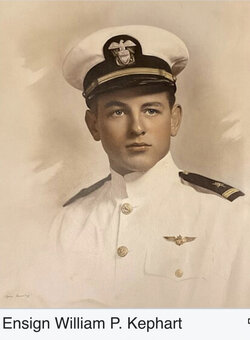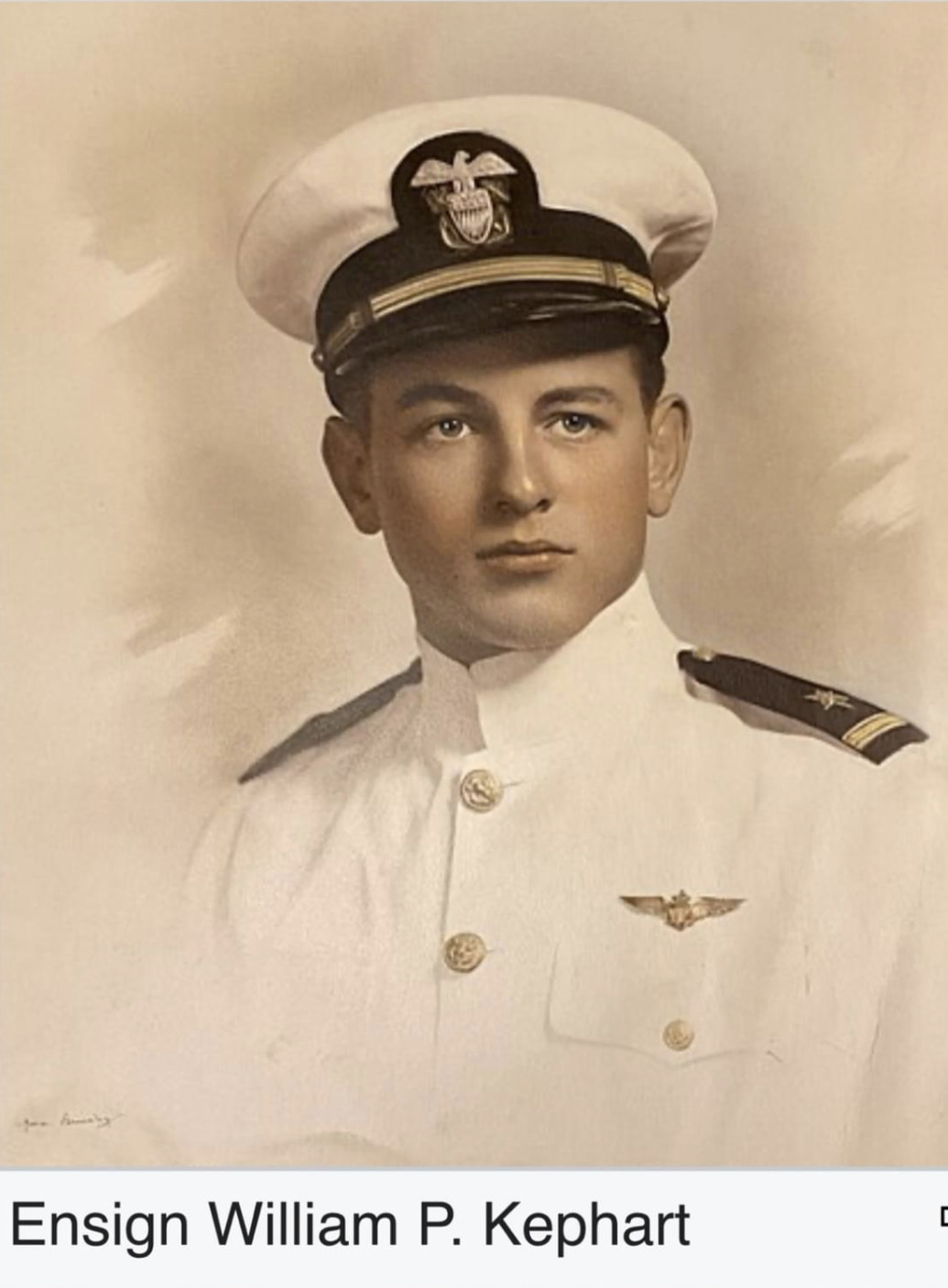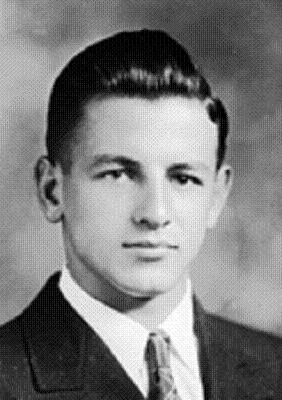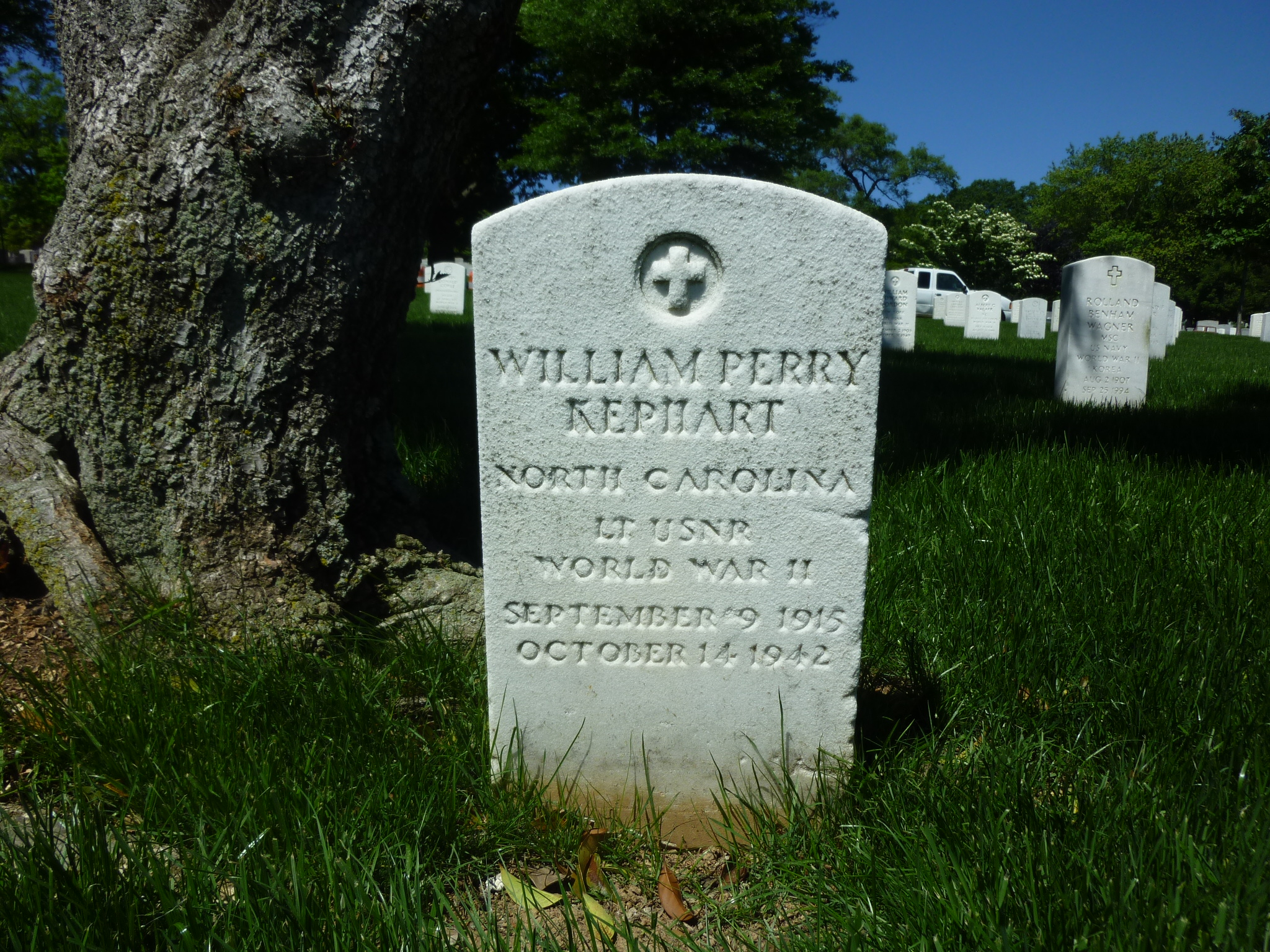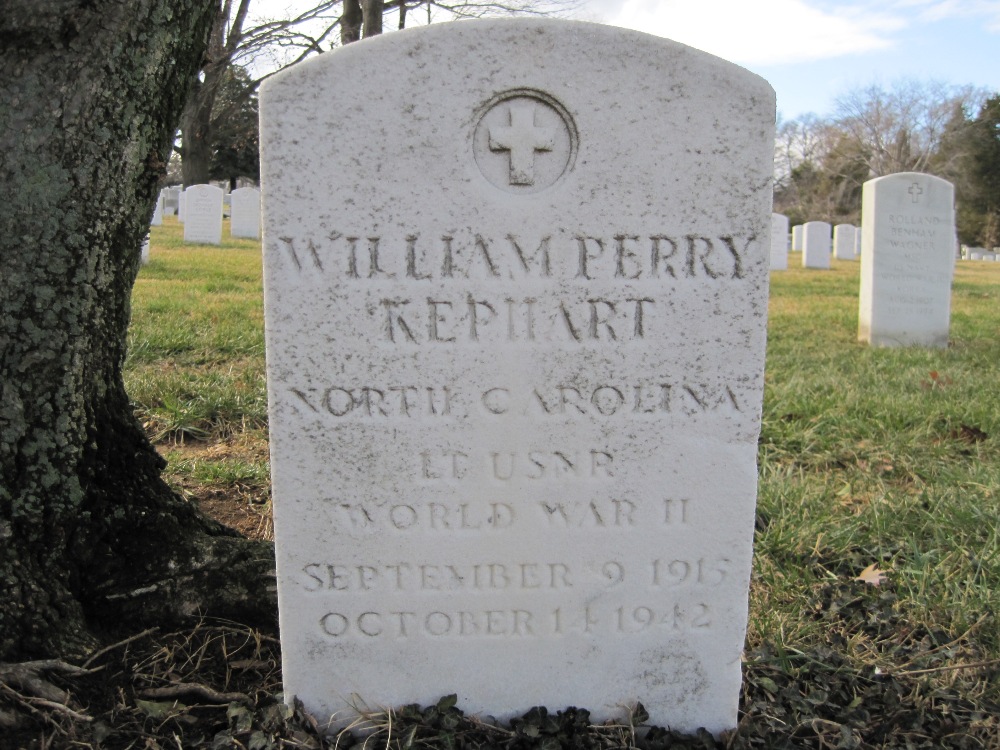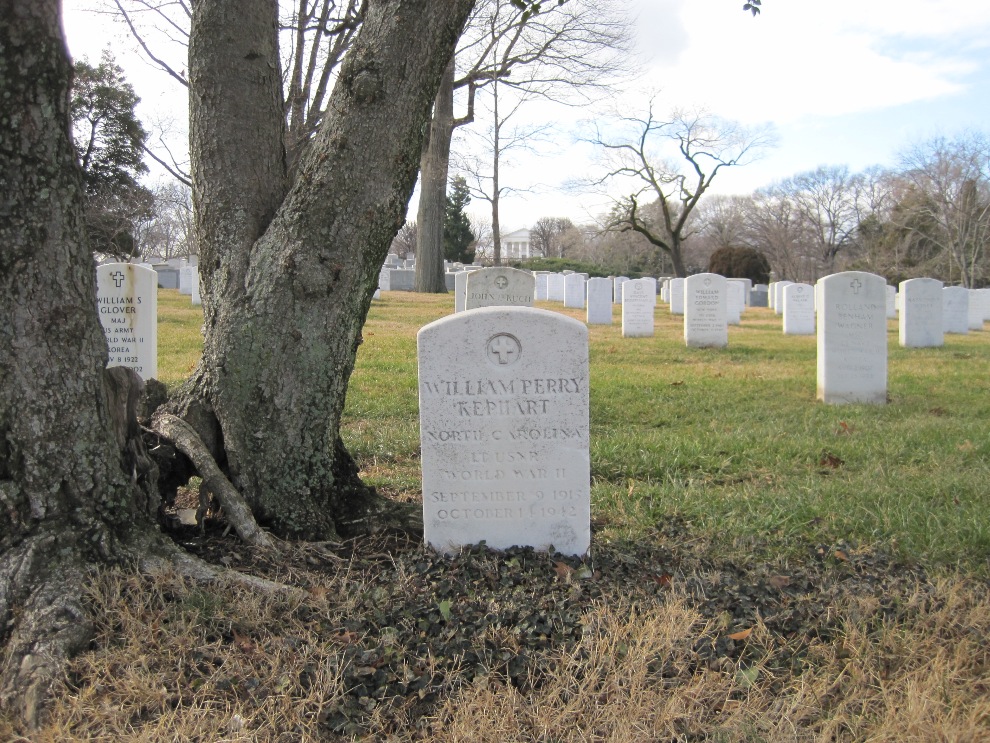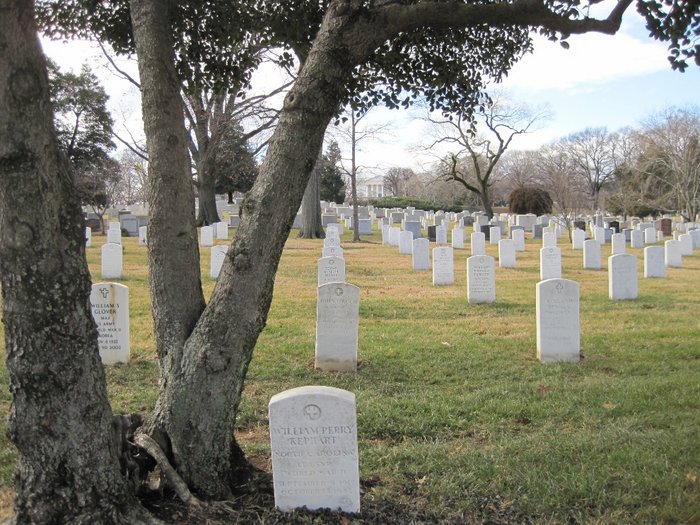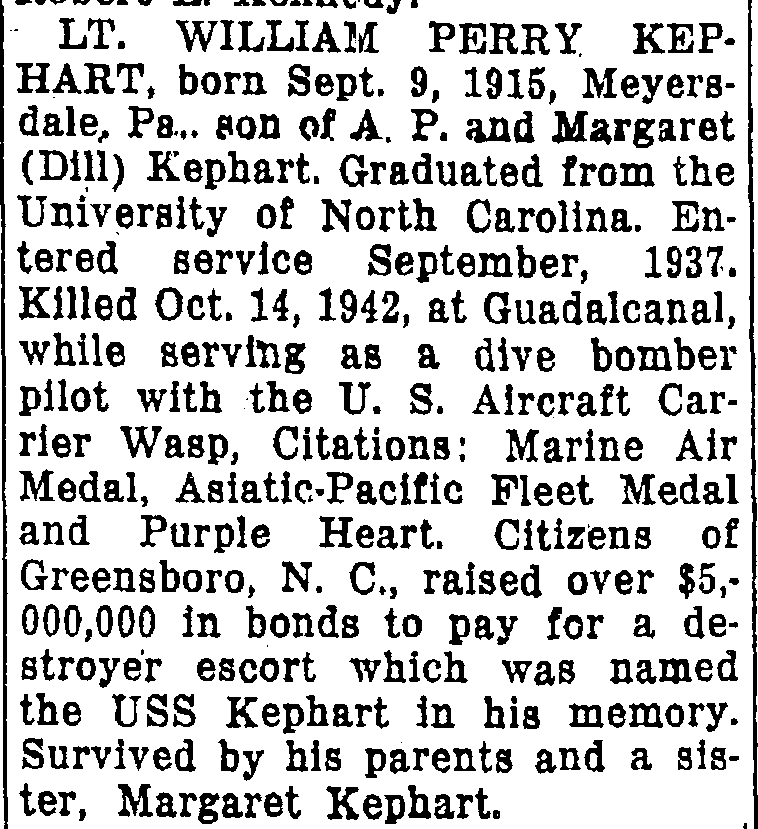A name among many on plaques seems a small gesture considering the ultimate sacrifices of hundreds who died in World War II. One family who lost a son in World War II sought and got more recognition for him. Navy Lt. Kephart, a fighter pilot, was among the first killed in the war. He died when the Japanese bombed the island of Guadalcanal in the South Pacific. America had been at war only 10 months.
Because of a grieving mother's determination and the generosity of Greensboro residents, Kephart, in a sense, kept on fighting the war. In 1943, the Navy launched the destroyer escort, USS Kephart. Reading between the lines of the stories about Kephart, his mother, Mauguerite Kephart, appears to have captained the push to persuade the Navy to name for her son one of the war vessels that shipyard workers were building in record time. The Navy obliged after Greensboro residents bought $5 million in war bonds toward the ship's $13 million cost. Most of the bonds came from a sold-out gala at the Carolina Theatre, featuring a patriotic movie, "So Proudly We Hail." Bonds were purchased in amounts from $25 to $100,000. In January 1944, Mauguerite Kephart and husband, A.P. Kephart, and Greensboro Mayor W.H. Sullivan were in the Charleston, S.C., shipyard for the USS Kephart's christening. The ship had been launched the year before with a series of shakedown cruises to Europe and the Mediterranean. Mauguerite Kephart did the champagne honors, and Sullivan spoke, declaring Kephart's achievements before his death offered a high goal for other young American men to pursue. The Kepharts, who lived on Joyner Street near what's now the UNCG campus, were not wealthy people, but were highly respected. A.P. Kephart was principal of former Curry School, a first- through 12th-grade public school operated by UNCG. After William Kephart graduated from Curry in 1931 and spent a year abroad in Scotland, he entered UNC-Chapel Hill. He studied engineering, graduating Phi Beta Kappa. Greensboro's eagerness to buy bonds to honor him likely came from collective grief. Kephart's death ended a life filled with promise. After UNC, he turned down a graduate scholarship to the Massachusetts Institute of Technology to join the Navy in 1937. This was a time when there was no pressure on American men to join the military. The nation's entry into the war and the draft were four years away. Kephart escaped death in September 1942 when Japanese planes sunk his carrier, the Wasp. Kephart's squadron had flown from the deck on a mission 15 minutes before. When the squadron returned to find its ship burning and sinking, it refueled on another carrier and flew to Guadalcanal to help Marines fighting the first island offensive of the war. While he and his squadron commander slept in a tent one night, they awoke to what the commander later described in a letter to Kephart's parents as "the deep roar of naval guns and crashing shells in our bivouac area.'' He and Kephart went to separate bunkers. The USS Kephart fought as hard as its namesake, who was later honored posthumously for daring techniques as Navy dive bomber. After being converted to a high-speed transport vessel, the Kephart joined the 7th fleet in New Guinea in the Pacific, carrying aboard a dog, "Hashmark,'' as mascot.
In November 1945, the Kephart sailed home with 147 sailors. After an overhaul, the ship went into moth balls in Orange, Texas, where she remained until 1967. The Navy then loaned her to the Korean Navy, which changed the ship's name to Kyong Pak. The Koreans bought the ship in 1974 and it remained in Korean water until 1985 when it was struck from Korean Navy rolls. As for William Kephart, he was honored again, posthumously in 1944, with the Navy Air Medal that praised his heroism on a dive bombing mission. Kephart was buried in a grove of rubber trees on Guadalcanal. In 1946, his body was brought home and buried in Arlington National Cemetery.
A name among many on plaques seems a small gesture considering the ultimate sacrifices of hundreds who died in World War II. One family who lost a son in World War II sought and got more recognition for him. Navy Lt. Kephart, a fighter pilot, was among the first killed in the war. He died when the Japanese bombed the island of Guadalcanal in the South Pacific. America had been at war only 10 months.
Because of a grieving mother's determination and the generosity of Greensboro residents, Kephart, in a sense, kept on fighting the war. In 1943, the Navy launched the destroyer escort, USS Kephart. Reading between the lines of the stories about Kephart, his mother, Mauguerite Kephart, appears to have captained the push to persuade the Navy to name for her son one of the war vessels that shipyard workers were building in record time. The Navy obliged after Greensboro residents bought $5 million in war bonds toward the ship's $13 million cost. Most of the bonds came from a sold-out gala at the Carolina Theatre, featuring a patriotic movie, "So Proudly We Hail." Bonds were purchased in amounts from $25 to $100,000. In January 1944, Mauguerite Kephart and husband, A.P. Kephart, and Greensboro Mayor W.H. Sullivan were in the Charleston, S.C., shipyard for the USS Kephart's christening. The ship had been launched the year before with a series of shakedown cruises to Europe and the Mediterranean. Mauguerite Kephart did the champagne honors, and Sullivan spoke, declaring Kephart's achievements before his death offered a high goal for other young American men to pursue. The Kepharts, who lived on Joyner Street near what's now the UNCG campus, were not wealthy people, but were highly respected. A.P. Kephart was principal of former Curry School, a first- through 12th-grade public school operated by UNCG. After William Kephart graduated from Curry in 1931 and spent a year abroad in Scotland, he entered UNC-Chapel Hill. He studied engineering, graduating Phi Beta Kappa. Greensboro's eagerness to buy bonds to honor him likely came from collective grief. Kephart's death ended a life filled with promise. After UNC, he turned down a graduate scholarship to the Massachusetts Institute of Technology to join the Navy in 1937. This was a time when there was no pressure on American men to join the military. The nation's entry into the war and the draft were four years away. Kephart escaped death in September 1942 when Japanese planes sunk his carrier, the Wasp. Kephart's squadron had flown from the deck on a mission 15 minutes before. When the squadron returned to find its ship burning and sinking, it refueled on another carrier and flew to Guadalcanal to help Marines fighting the first island offensive of the war. While he and his squadron commander slept in a tent one night, they awoke to what the commander later described in a letter to Kephart's parents as "the deep roar of naval guns and crashing shells in our bivouac area.'' He and Kephart went to separate bunkers. The USS Kephart fought as hard as its namesake, who was later honored posthumously for daring techniques as Navy dive bomber. After being converted to a high-speed transport vessel, the Kephart joined the 7th fleet in New Guinea in the Pacific, carrying aboard a dog, "Hashmark,'' as mascot.
In November 1945, the Kephart sailed home with 147 sailors. After an overhaul, the ship went into moth balls in Orange, Texas, where she remained until 1967. The Navy then loaned her to the Korean Navy, which changed the ship's name to Kyong Pak. The Koreans bought the ship in 1974 and it remained in Korean water until 1985 when it was struck from Korean Navy rolls. As for William Kephart, he was honored again, posthumously in 1944, with the Navy Air Medal that praised his heroism on a dive bombing mission. Kephart was buried in a grove of rubber trees on Guadalcanal. In 1946, his body was brought home and buried in Arlington National Cemetery.
Family Members
Sponsored by Ancestry
Advertisement
Explore more
Sponsored by Ancestry
Advertisement
